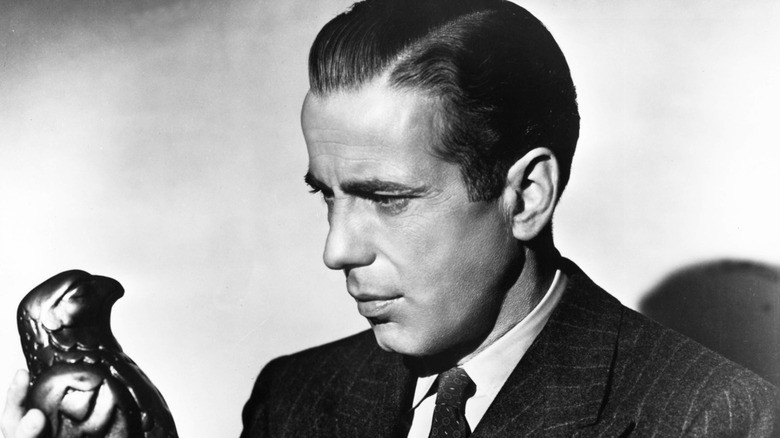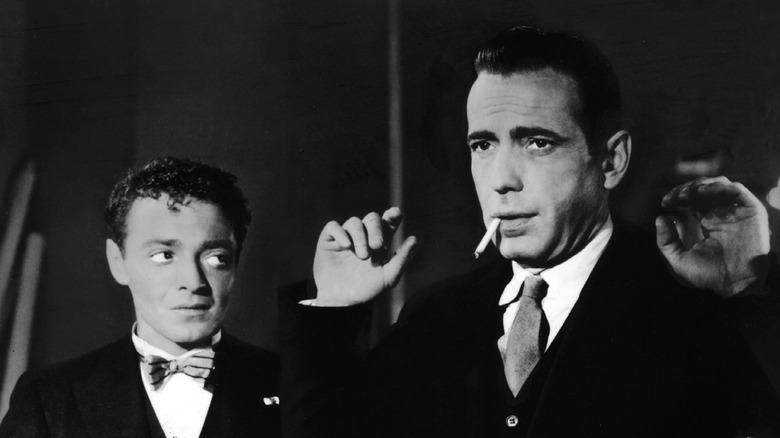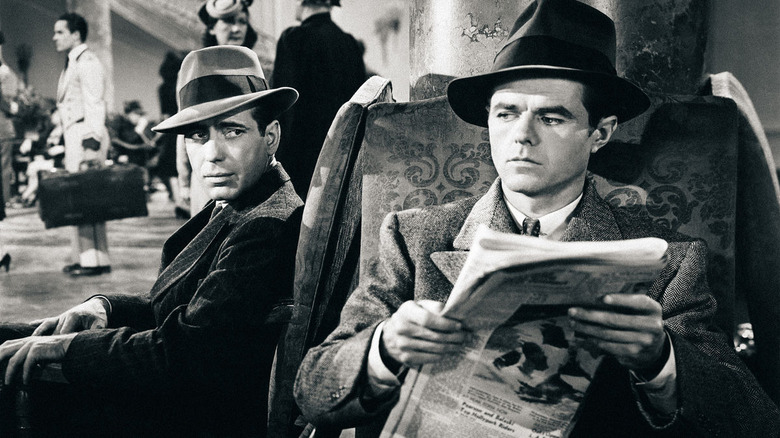How One Suggestion From Humphrey Bogart Saved The Maltese Falcon
An unforgettable staple of early Hollywood, the late actor Humphrey Bogart was far more than just a vessel for the creativity of the filmmakers with whom he worked. His distinct persona infused each part of Bogart's extensive and dynamic filmography with his own personal charm, and John Huston's "The Maltese Falcon" (1941) was no exception. However, it wasn't just personality that Bogart brought to the table in his projects.
In the initial ending of Huston's film, the iconic closing line was completely different. Author Stefan Kafner compiled reports from the film's crew in his Bogart biography, "Tough Without A Gun," and his intel suggests that Bogart himself offered up the line that ultimately saved "The Maltese Falcon" from a lackluster ending. What is now one of the most notable works of Hollywood's world-famous film noir genre was inches away from a reputation as a great mystery with a sub-par conclusion.
To quote or not to quote
"The Maltese Falcon" features one of the most notable instances of a Macguffin, or a physical object used to propel the plot, in film history. It also contains other distinctive tropes of the noir genre, such as the hard-boiled private investigator played by Bogart and his mysterious client — a "femme fatale" if ever there was one. It is hard to imagine such a certified classic any other way, but the final product did divert slightly from the original screenplay.
Huston knew that he wanted to draw from Shakespeare to create a notable ending to his epic noir, but his original idea to use lines from "Hamlet" ultimately missed the mark. Huston reportedly hated the final scene but was unable to think of an alternative until a fateful conversation with the film's star. Per Bogart's suggestion, the closing line was reworked to include a quote from Shakespeare's "The Tempest." In this familiar rendition of the scene, Bogart's character refers to the titular falcon statuette as "the stuff dreams are made of," an echo of Shakespeare's famous words in his definitive work, "we are such stuff as dreams are made on."
Dreams are made of these
This quote brings the entire film into perspective. The pursuit of the Maltese falcon is akin to chasing a dream. The statuette is a concrete object, but the significance attached to it is entirely ineffable. The item that drives the characters and their actions throughout the film is only powerful because it has inspired such action— a wild goose chase in the shape of a spiral. In this way, it resembles the loose logic that ties a dream sequence together.
Actors did not typically step outside of their roles in filmmaking during Hollywood's studio era of the '40s and '50s, a time of rigid restrictions and factory-like cinematic production. This suggestion undoubtedly made "The Maltese Falcon" into the memorable masterpiece that it is today. It may have been a small change, but a more lukewarm ending could have easily ruined an otherwise excellent movie. This collaboration between Huston and Bogart was just the beginning of their long creative relationship together. The two were known for pushing each other out of their comfort zones, which made for moments that challenged Bogart's tough exterior.


